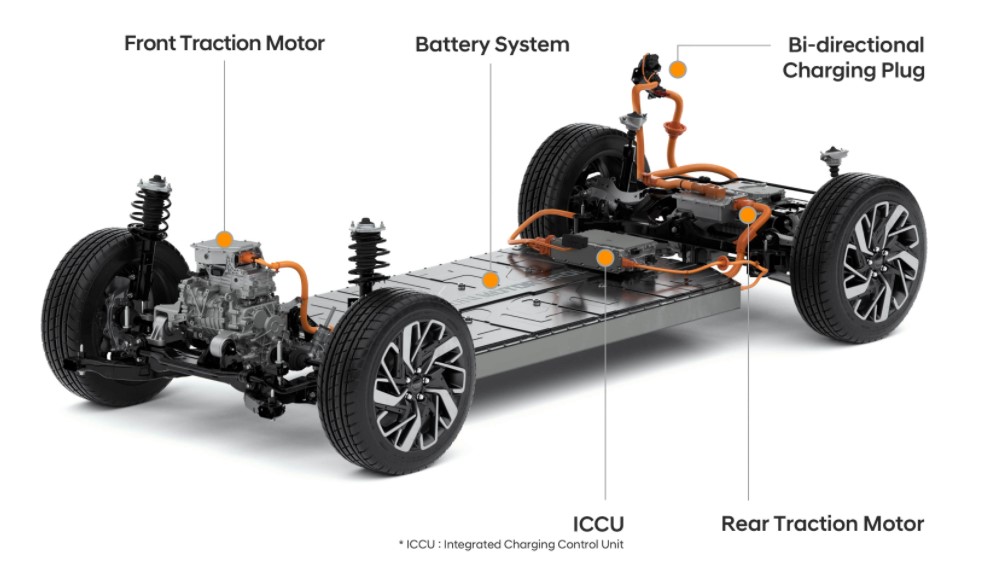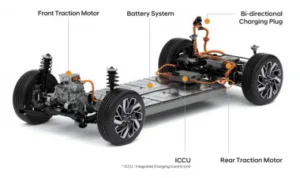They all laughed at Christopher Columbus
When he said the world was round;
They all laughed
When Edison recorded sound.
- – Lyrics by Ira Gershwin, 1937
And I laughed, too, when rumors circulated — more than once — that Apple would build an automobile. Well, I’m not laughing now, at least not as loudly.

The obvious issue is that cars are complicated and Apple doesn’t know anything about building them. What Apple does know about is electronic and data systems, which are increasingly important parts of modern cars. Automotive design teams are likely to have many more electronic and data-systems engineers than mechanical engineers. So the obvious assumption is that Apple (and Google) would sell electronic systems and integration expertise to the people who actually know how to build cars.
But we in the display industry know about contract manufacturing and original design manufacturers (ODMs). Apple doesn’t manufacture its iPhones, Foxconn does. On the automotive side, Tier One suppliers such as Magna, Continental, Robert Bosch, BorgWarner, Magneti Marelli, and Visteon sell not only components directly to automakers, but also highly complex systems. The reason 2028 is often given as the year when will see completely autonomous vehicles is because that is the year in which Continental is promising essential sub-systems to its customers.
With so much expertise in automotive systems existing outside of OEMs, when might we expect the automotive equivalent of an ODM to rise from this fertile soil? You probably saw this coming: We don’t have to wait. Magna International (Aurora, Ontario) is doing complete vehicle engineering and assembly now. It manufacturers the Mercedes-Benz G-Class SUV, the BMW Z4 roadster, and the Toyota Supra. (The Z4 and Supra are mechanical siblings.) Magna also has an agreement to produce the Fisker Ocean EV SUV.
The Finnish company Valmet has built 1.7 million vehicles since it was founded in 1968, including the original Saab 900 convertible and the first-generation Porsche Boxster. It currently builds cars for Mercedes-Benz.
A Diplomatic Blunder
Early this year, Hyundai made a diplomatic blunder by revealing to Korean reporters that the company was one of several manufacturers negotiating to build an autonomous electric vehicle for Apple. (Hyundai quickly revised the statement.) But this makes a certain amount of sense. An EV has a much simpler platform than an internal combustion vehicle, and it would be relatively easy for Hyundai or Magna to make a platform that could be used for several vehicles and vehicle brands (Fig. 1). This cost- and time-reduction strategy does have risks attached. In March, David Fritz, a director at Siemens Digital Industries, quoted an industry joke:
“How do you make money selling a car when your only differentiation is in the number of cup holders?”
 Fig. 1. This Hyundai EV platform is likely to be similar to the one ultimately used in Apple’s car. The idea of an ODM making the automotive platform and leaving the electronic systems to Apple makes the idea of an Apple car less laughable than it once was. (Image: Hyundai)
Fig. 1. This Hyundai EV platform is likely to be similar to the one ultimately used in Apple’s car. The idea of an ODM making the automotive platform and leaving the electronic systems to Apple makes the idea of an Apple car less laughable than it once was. (Image: Hyundai)
Back to Foxconn, which has agreed to make Fisker’s next vehicle (the one after the Ocean), with an announced target of 250,000 units beginning late in 2023. Foxconn also claims to have other EV projects under discussion, and at least one Chinese analyst believes that Foxconn’s ultimate goal is to make cars for Apple as well as smartphones.
All of this is entertaining, but I’m not laughing anymore. (KW)
Ken Werner is Principal of Nutmeg Consultants, specializing in the display industry, manufacturing, technology, and applications, including mobile devices, automotive, and television. He consults for attorneys, investment analysts, and companies re-positioning themselves within the display industry or using displays in their products. He is the 2017 recipient of the Society for Information Display’s Lewis and Beatrice Winner Award. You can reach him at [email protected] or www.nutmegconsultants.com.

